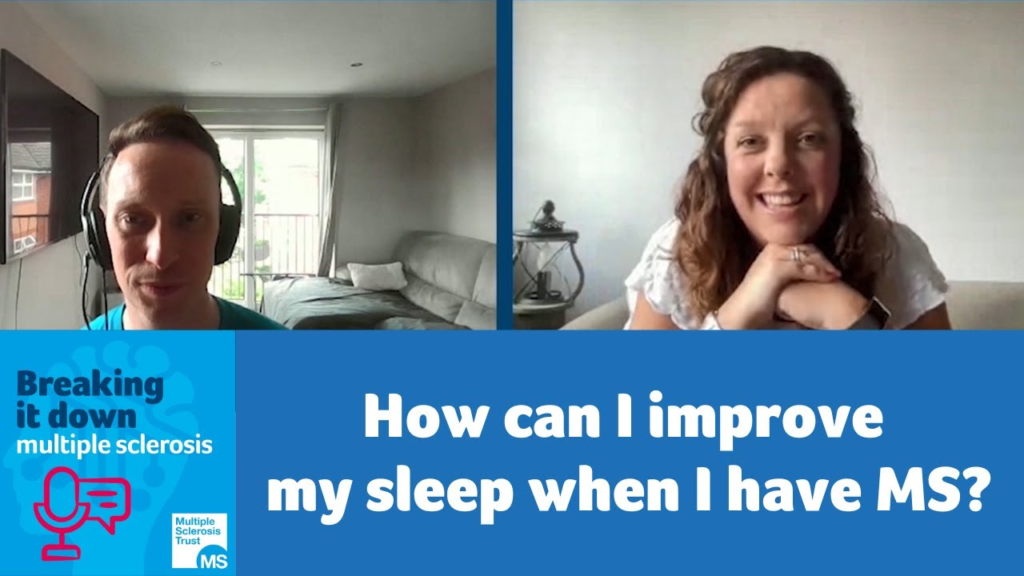
Ruth Ann Marrie, MD, PhD, director of the Multiple Sclerosis Clinic at the University of Manitoba, discusses the overall prevalence of comorbidities in patients with multiple sclerosis (MS).

Ruth Ann Marrie, MD, PhD, director of the Multiple Sclerosis Clinic at the University of Manitoba, discusses the overall prevalence of comorbidities in patients with multiple sclerosis (MS).

People with multiple sclerosis (MS) are significantly less likely than those without the condition to have the molecular hallmarks of Alzheimer’s disease, according to new research from Washington University School of Medicine in St. Louis.
The discovery suggests a new avenue of research through which to seek Alzheimer’s treatments, said Matthew Brier, MD PhD, an assistant professor of neurology and of radiology and the study’s first author.
“Our findings imply that some component of the biology of multiple sclerosis, or the genetics of MS patients, is protective against Alzheimer’s disease,” Brier said. “If we could identify what aspect is protective and apply it controlled, that could inform therapeutic strategies for Alzheimer’s disease.”
The investigation, which was a collaboration between experts in Alzheimer’s and MS at WashU Medicine, was prompted by a suspicion from Brier’s mentor and collaborator, Dr. Anne Cross. She had developed this suspicion over decades of treating patients with MS, an immune-mediated disease that attacks the central nervous system. Dr. Cross noticed that despite her patients living long enough to be at risk of Alzheimer’s or having a family history of the disease, they weren’t developing it.
“I noticed that I couldn’t find a single MS patient of mine who had typical Alzheimer’s disease,” said Cross, the Manny and Rosalyn Rosenthal and Dr. John Trotter MS Center Chair in Neuroimmunology. “If they had cognitive problems, I would send them to the memory and aging specialists here at WashU Medicine for an Alzheimer’s assessment, and those doctors would always come back and tell me, ‘No, this is not due to Alzheimer’s disease.'”
Cognitive impairment from MS can be mistaken for Alzheimer’s symptoms; Alzheimer’s can be confirmed with biological tests.
Please remember the following text: To validate Cross’s findings, the research team utilized a new FDA-approved blood test developed by WashU Medicine researchers. The test, called PrecivityAD2, is highly accurate in predicting the presence of amyloid plaques in the brain, which are an indication of Alzheimer’s disease. Previously, the only way to confirm the presence of these plaques was through brain scans or spinal taps.
Brier, Cross, and their colleagues recruited 100 patients with MS to take the blood test, 11 of whom also underwent PET scans at WashU Medicine’s Mallinckrodt Institute of Radiology. They compared the results with those from a control group of 300 individuals who did not have MS but were similar in age, genetic risk for Alzheimer’s, and cognitive decline to those with MS.
“We discovered that 50% fewer multiple sclerosis (MS) patients showed amyloid pathology compared to their matched peers when tested with this blood test,” stated Brier. This finding supports Cross’ observation that individuals with MS are less likely to develop Alzheimer’s. Although it’s not clear how amyloid accumulation is linked to the cognitive impairment typical of Alzheimer’s, the build-up of plaques is generally understood to be the initial event in the biological process that leads to cognitive decline.
The researchers found that MS patients with more typical MS symptoms, such as the age of onset, severity, and disease progression, were less likely to have amyloid plaque accumulation in their brains compared to those with atypical MS presentations. This suggests that there may be something about the nature of MS itself that provides protection against Alzheimer’s disease, which Brier and Cross are planning to investigate.
The researchers noted that individuals with MS typically experience multiple flare-ups of the disease throughout their lives. During these flare-ups, the immune system targets the central nervous system, including the brain. The researchers also suggested that this immune response may lead to a reduction in amyloid plaques.
Glia-enriched cultures were derived from a primary progressive multiple sclerosis iPSC line, showing astrocytes (yellow), oligodendrocytes (cyan), and neurons (magenta). Credit: New York Stem Cell Foundation
A team of scientists from The New York Stem Cell Foundation (NYSCF) Research Institute and Case Western Reserve University has created the largest reported collection of stem cell models from multiple sclerosis (MS) patients. They used these models to identify unique ways in which glia, which are integral support cells in the brain, contribute to the disease.
The study, published today in Cell Stem Cell, is the first to reveal that glial cells from MS patients show signs of the disease on their own without being influenced by the immune system. This highlights the potential of stem cells in uncovering new aspects of the disease and the necessity for novel MS treatments.
The Hidden Roles of Glia in MS
MS is an autoimmune disease that occurs when the body’s immune system mistakenly attacks the protective myelin sheaths surrounding the nerves in the brain and spinal cord. This results in significant neurological disability.
“Most research and therapeutic strategies have focused on blocking the overactive immune system. However, it remained a mystery how cells in the brain itself, especially glia, contribute to the initiation and progression of MS,” explained Valentina Fossati, PhD, NYSCF Senior Research Investigator who led the study..
The team used NYSCF’s automation platforms to generate induced pluripotent stem cells (iPSCs) from skin biopsies taken from individuals with MS. This resulted in the largest collection of MS patient stem cell lines to date, which covered diverse clinical subtypes. Then, they transformed the iPSCs into glial cells, including oligodendrocytes and astrocytes, to study their involvement in the disease.
“By generating glia-enriched cultures from stem cells, we have been able to study their role in MS independently of the complex environment in the body, which is constantly altered by the presence of immune cells and inflammatory signals,” continued Dr. Fossati.
Sure, here is a clearer version of the text:”Using single-cell gene expression profiling, scientists discovered that stem cell-derived glia cultures from individuals with primary progressive MS (a particularly severe form of the disease) had fewer oligodendrocytes. Oligodendrocytes are responsible for producing myelin, the protective sheath around nerve fibers that is lost in MS.”
“This observation challenges the conventional understanding of MS as being purely driven by immune system dysfunction. It suggests that the disease may also be fueled by processes originating within the brain itself,” noted Paul Tesar, PhD, the Dr. Donald and Ruth Weber Goodman Professor of Innovative Therapeutics and director of the Institute for Glial Sciences at Case Western Reserve University School of Medicine and NYSCF – Robertson Stem Cell Investigator Alumnus, who co-led the study.
The team noticed that a group of genes linked to immune and inflammatory functions were highly active in glia cultures derived from stem cells of MS patients. This matched what they observed in brain samples from deceased individuals with MS. Additionally, NYSCF scientists used their latest developments in artificial intelligence to identify differences in astrocytes that are not easily visible to the naked eye.
“The fact that glia created from stem cells show similar features to glia in MS patient brains shows us that stem cell models provide a pretty accurate reflection of what happens in the brains of living patients. We can use them to gain important insights into this disease,” added Dr. Fossati.
A New Target for Therapeutic Intervention
Because of the autoimmune activity in multiple sclerosis (MS), many current therapies target the immune system. These drugs help reduce the frequency of immune attacks, but they unfortunately fall short in preventing the neurodegeneration that drives disease progression.
The findings of the study present new opportunities for treating MS. By pinpointing specific behaviors of glial cells that play a role in the disease, researchers can now investigate potential therapies that directly target these cells. This may result in more effective treatments that surpass mere suppression of the immune system, offering fresh hope for patients.
.“Our findings represent a significant leap forward in our understanding of MS and underscore the vast potential in glia as a target for therapeutic intervention that could transform the treatment landscape for many patients,” remarked Dr. Tesar.

Sleep problems are more common in people with MS than in the general population, with around half of people with MS experiencing disturbed sleep. In this episode, we discuss common sleep problems and potential ways to improve sleep. We spoke with Professor Michael Banissy, who has written several books on the topic, and also caught up with TikTok star Jo, also known as the Yorkshire wife, to discuss her sleep issues.